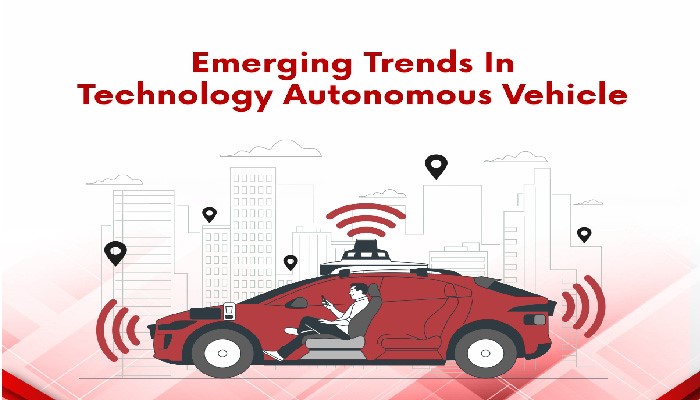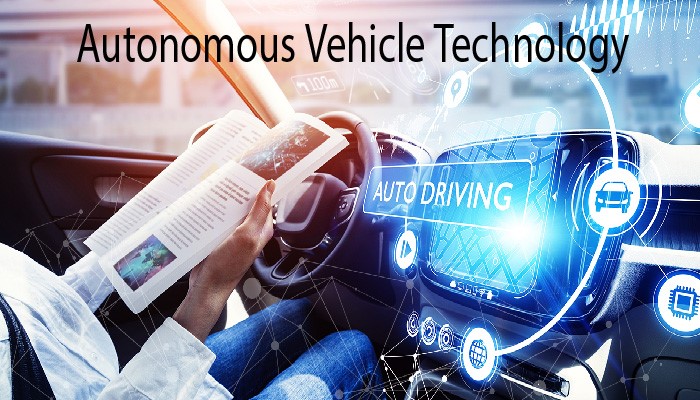Advancements in Autonomous Vehicle Technology
Buckle up and get ready to dive into the exciting world of Autonomous Vehicle Technology! Imagine a future where cars can drive themselves, making roads safer and transportation more efficient. From sci-fi dreams to real-life innovations, autonomous vehicles are revolutionizing the way we think about mobility. Let’s take a journey through the evolution, benefits, challenges, and future possibilities of this groundbreaking technology. It’s time to hit the road towards a new era of transportation!

The Evolution of Autonomous Vehicle Technology
The evolution of autonomous vehicle technology has been nothing short of remarkable. From early experiments in the 1920s to today’s cutting-edge advancements, the journey has been both exciting and challenging.
In the beginning, basic cruise control systems paved the way for more sophisticated features like lane-keeping assist and adaptive cruise control. As technology continued to improve, so did the capabilities of autonomous vehicles.
Today, we see fully autonomous cars being tested on roads around the world. These vehicles rely on a complex network of sensors, cameras, and artificial intelligence algorithms to navigate safely and efficiently.
With each new iteration, autonomous vehicles are becoming smarter and more reliable. The future holds even greater promise as researchers explore innovations like V2X communication and machine learning algorithms.
As we look back at how far we’ve come, it’s clear that the evolution of autonomous vehicle technology is far from over. Exciting developments lie ahead as we continue to push boundaries and unlock new possibilities in transportation.
Benefits and Potential Impact on Society
Autonomous vehicle technology is not just about convenience; it has the potential to revolutionize society in numerous ways. One of the most significant benefits is increased road safety, as autonomous vehicles have the ability to reduce human error, which accounts for a large percentage of accidents. This could lead to fewer injuries and fatalities on the roads, making transportation safer for everyone.
Moreover, autonomous vehicles can improve traffic flow and reduce congestion by optimizing routes and driving patterns. This not only saves time for individuals but also decreases carbon emissions from idling vehicles stuck in traffic jams. Additionally, self-driving cars provide greater mobility options for people who are unable to drive due to age or disabilities.
Furthermore, this technology opens up new possibilities for urban planning and design as parking spaces may become obsolete with shared autonomous fleets circulating continuously. As a result, cities can reclaim valuable space currently dedicated to parking lots and garages for parks or commercial developments. The potential societal impacts of autonomous vehicles are vast and exciting as we move towards a more connected and efficient future.
Current State of Autonomous Vehicles
Autonomous vehicles have come a long way from being mere concepts to becoming a reality on our roads today. Companies like Tesla, Waymo, and Uber have been pioneering the development of self-driving technology, testing it in various real-world scenarios.
In the current state of autonomous vehicles, we see a mix of excitement and skepticism. While some are eager to embrace this futuristic mode of transportation for its potential to reduce accidents and traffic congestion, others raise concerns about safety issues and job displacement.
Despite advancements in sensor technology and machine learning algorithms, there have been notable setbacks such as accidents involving self-driving cars. Regulators are also grappling with establishing clear guidelines for the deployment of autonomous vehicles on public roads.
Nonetheless, research and development continue at a rapid pace as automakers strive to perfect self-driving systems that can navigate complex environments seamlessly. The future holds promise for autonomous vehicles, but challenges remain before they become commonplace in our daily lives.
Challenges and Limitations
Navigating the road to fully autonomous vehicles comes with its fair share of challenges and limitations. One major hurdle is ensuring the safety of passengers and pedestrians in complex traffic scenarios. Current technology still struggles to accurately predict and react to unpredictable human behavior on the road.
Another obstacle is regulatory approval and public acceptance. While advancements are being made, there are still concerns around liability, ethics, and privacy when it comes to handing over control to machines.
Moreover, the cost associated with developing and implementing autonomous vehicle technology remains a significant barrier for widespread adoption. From infrastructure updates to software development, the financial investment required can be daunting for many companies and governments alike.
Interfacing with existing transportation systems poses yet another challenge. Integrating self-driving cars seamlessly into a world designed for human drivers requires innovative solutions that consider factors like communication protocols between vehicles and infrastructure.
Despite these challenges, researchers, engineers, and policymakers continue to work tirelessly towards overcoming these obstacles in order to unlock the full potential of autonomous vehicle technology.
Innovations and Future Possibilities
As we look towards the future of autonomous vehicle technology, exciting innovations are on the horizon. One area that holds great promise is the development of artificial intelligence algorithms that can enhance decision-making capabilities in complex driving scenarios. These advancements will further improve safety and efficiency on the roads.
Moreover, with the integration of Internet of Things (IoT) technologies, autonomous vehicles could communicate with each other and infrastructure systems in real-time. This interconnected network has the potential to optimize traffic flow, reduce congestion, and minimize environmental impact.
Additionally, researchers are exploring advancements in sensor technology like LiDAR and radar to enhance perception and navigation abilities. These improvements will allow autonomous vehicles to operate more effectively in various weather conditions and challenging environments.
Furthermore, as electric vehicle technology continues to advance, integrating it with autonomous systems could lead to a significant reduction in carbon emissions and a more sustainable transportation ecosystem. The possibilities for innovation in autonomous vehicle technology seem limitless as we continue to push boundaries and redefine mobility for tomorrow’s world.
Conclusion
Autonomous Vehicle Technology continues to revolutionize the way we think about transportation. From its humble beginnings to the sophisticated systems of today, AV technology has come a long way. The benefits it offers in terms of safety, efficiency, and accessibility are undeniable.
As companies and researchers continue to overcome challenges and push boundaries, the future possibilities for autonomous vehicles seem limitless. With ongoing innovations in AI, sensor technology, and connectivity, we can expect even more advanced AV systems in the years to come.
Autonomous Vehicle Technology is not just changing how we move from one place to another; it’s transforming our entire society. Embracing this groundbreaking technology will undoubtedly lead us towards a safer, more efficient, and sustainable future on the roads.



